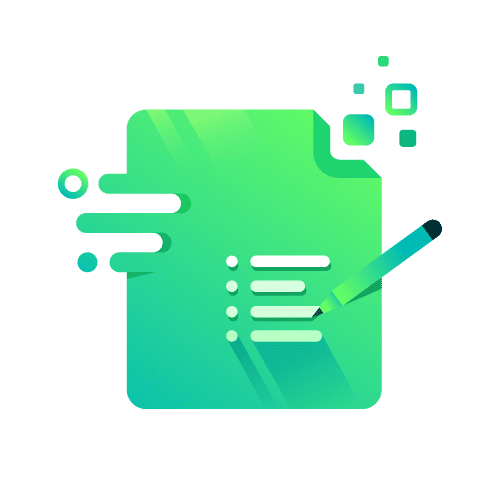A confidentiality agreement contract is a powerful way to safeguard sensitive information, which is very important in the ever-evolving business landscapes. In this guide, let us discuss the intricacies of confidentiality agreements, key elements, common pitfalls to avoid, and future trends in 2024.

What Is A Confidentiality Agreement?
A confidentiality agreement is a legally binding contract between two or more parties that outlines the terms and conditions regarding the sharing and protection of confidential information. This legal instrument serves to establish trust between parties engaging in discussions where sensitive information may be disclosed. These agreements are important in fostering trust and ensuring the security of sensitive data, whether in business partnerships, employment contracts, or other professional relationships. A Non-Disclosure Agreement, commonly known as NDA, is a part of confidentiality agreement contracts.
The importance of confidentiality agreement contracts cannot be overstated, especially in industries where proprietary information, trade secrets, or intellectual property form the core of business operations. These agreements provide a framework for protecting sensitive data, fostering collaboration, and ensuring that the parties involved are aware of their obligations regarding the confidentiality of shared information.
Key Elements Of Confidentiality Agreement Contracts
To create an effective confidentiality agreement, certain key elements must be meticulously addressed. These essential components form the foundation for a comprehensive and enforceable document to safeguard sensitive information. Let us have a look below.
Identification Of Parties
In any confidential agreement, it is important to distinctly outline the parties involved. The disclosing party, the entity or individual sharing the confidential information, must be explicitly identified. Conversely, the receiving party, representing the entity or individual acquiring the confidential information, should also be specified. Delineating these roles ensures a comprehensive understanding of the agreement’s obligations and safeguards the integrity of confidential information.
Definition Of Confidential Information
Confidential information encompasses essential elements for safeguarding a party’s interests. This includes the clear identification and protection of trade secrets, which is essential for maintaining a competitive advantage. Additionally, the definition extends to a clear description of what constitutes sensitive information, emphasizing the need to refrain from its disclosure. This comprehensive approach ensures a robust framework for preserving confidentiality and securing proprietary assets.
Obligations Of The Receiving Party
The receiving party is bound by specific obligations to uphold the integrity of confidential information. This includes a duty to maintain confidentiality, clearly outlining the responsibility to keep disclosed information private. Also, the agreement imposes restrictions on the use and disclosure of confidential information, specifying the permissible limits to ensure its protection and prevent unauthorized dissemination. These obligations collectively form a framework for maintaining trust and safeguarding important data.
Duration Of Confidentiality
The duration of confidentiality is one of the most important key elements of the agreement. Parties must delineate between temporary and perpetual agreements, deciding whether confidentiality is bound by a specific period or extends indefinitely. Conditions for termination should be clearly defined, specifying the circumstances under which confidentiality obligations can be concluded. This precision ensures clarity and transparency in the lifespan of the confidentiality provisions, aligning with the mutual understanding of the involved parties.
How Confidentiality Agreement Works

Confidentiality agreements are essential for protecting sensitive information and fostering trust between parties involved in business relationships, collaborations, or negotiations. Let us discuss how a typical confidentiality agreement works.
Mutual Agreement
Both parties involved agree to the terms and conditions of the confidentiality agreement. This agreement can be mutual, where both parties may be disclosing and receiving confidential information, or it can be unilateral, where only one party is disclosing information.
Obligations Of The Receiving Party
The receiving party commits to maintaining confidentiality by refraining from disclosing confidential information to third parties. They agree to utilize the information solely for the specified purpose and undertake reasonable measures to secure it, preventing unauthorized access. These obligations collectively form the foundation for responsible and secure handling of confidential data.
Permitted Disclosures
The agreement may specify certain circumstances under which the receiving party is allowed to disclose confidential information, such as to employees or contractors with a need to know or as required by law.
Fix The Duration Of Confidentiality
The agreement sets a specific time frame during which the receiving party must maintain confidentiality. This could be for a set number of years or until a certain event occurs.
Return Or Destruction Of Information
Upon the completion of the disclosed information’s purpose or the expiration of the agreement, the receiving party is often required to return or destroy the confidential information.
Exceptions To Confidentiality
The agreement may outline specific exceptions, such as information already in the public domain or information developed independently by the receiving party without reference to the disclosed information.
Remedies For Breach
The agreement typically specifies the consequences of a breach. This may include injunctive relief, monetary damages, or other remedies available to the disclosing party if the receiving party fails to uphold their obligations.
Governing Law & Jurisdiction
The agreement specifies the governing law that will apply and the jurisdiction where any legal disputes will be resolved. It is necessary to provide a clear framework for applicable laws for conflict resolution. This ensures a streamlined process for addressing legal matters related to the agreement.
Enforcement
If a breach occurs, the disclosing party can take legal action to enforce the terms of the agreement and seek appropriate remedies as outlined in the contract. This legal recourse serves as a deterrent, reinforcing the importance of upholding the confidentiality terms.
Drafting A Comprehensive Confidentiality Agreement Contract

Preparing a comprehensive confidentiality agreement is a necessary step in protecting sensitive information. To ensure its effectiveness and safeguard the interests of all parties involved, the below two steps are essential. Let us have a look.
Tailoring The Agreement To Specific Situations
Adapting the agreement to address unique concerns within a particular industry ensures that the document is relevant and effective. Also, customizing language for clarity is essential, as it helps all parties easily understand the terms and obligations, fostering a shared understanding and minimizing the risk of misinterpretation. This tailored approach enhances the agreement’s applicability and robustness in diverse business contexts.
Consultation With Legal Professionals
Consultation with legal professionals is necessary to fortify the confidentiality agreement. Seeking legal review and advice ensures that the document aligns with legal standards and effectively addresses the parties’ interests. This process helps to ensure enforceability, with legal professionals offering insights to make certain that the agreement’s terms and conditions adhere to applicable laws and regulations. This proactive approach minimizes legal risks and enhances the overall reliability and effectiveness of the confidentiality agreement.
Common Mistakes to Avoid
confidentiality agreements can face pitfalls that undermine their effectiveness. To avoid common mistakes, it is important to uphold the integrity of these agreements and protect the interests of all parties involved. Let us discuss which common mistakes you should learn about to avoid any inconvenience.
Ambiguous Language
One common mistake is the presence of ambiguous language, leading to misunderstandings. It is imperative to identify and rectify any vagueness in the agreement, ensuring clarity in the interpretation of terms to prevent disputes.
Overlooking Exclusions
Failure to clearly define what does not constitute confidential information can compromise the agreement’s efficacy. Including explicit provisions for exclusions is essential to avoid unintended disclosures and maintain the agreement’s integrity.
Crack-up To Specify Permitted Disclosures
Clearly outlining situations in which the receiving party is permitted to disclose confidential information is a must. This helps establish boundaries and expectations, minimizing the risk of unauthorized disclosures and fostering a more secure agreement.
Inadequate Remedies For Breach
Addressing potential breaches with appropriate and enforceable remedies is crucial for maintaining the deterrent effect of the agreement. Inadequate remedies may diminish the agreement’s effectiveness in discouraging breaches and protecting the injured party’s interests.
Future Trends In Confidentiality Agreements
Anticipating the evolving landscape of business practices, let us discuss some future trends in confidentiality agreements. Let us have a look below.
Emerging Technologies & Confidentiality
Confidentiality agreements are experiencing transformation amid the evolution of technological landscapes. Advancements like blockchain and AI are reshaping how information is protected, introducing new considerations for parties involved in such agreements. Understanding and incorporating these emerging technologies into confidentiality frameworks will be essential for staying ahead in an ever-changing digital environment.
Changes In Legislation
Changes in legislation further contribute to the dynamic nature of confidentiality agreements. Legal frameworks may shift, impacting the enforceability and effectiveness of these agreements. Staying informed about and adapting to evolving legal standards ensures that confidentiality agreements remain robust and compliant with the changing regulatory landscape.
Remote Work & Confidentiality Challenges
The prevalence of remote work introduces new challenges in securing confidential information in virtual environments. A proactive approach is required to address these specific concerns in the context of confidentiality agreements.
Make Sure Your Business Has Confidentiality Agreements
To safeguard a business, a confidentiality agreement stands as a crucial shield against unauthorized disclosures and breaches of sensitive information. Whether engaging in collaborations, partnerships, or any form of business transaction, having a well-crafted confidentiality agreement ensures that your proprietary data remains secure. By incorporating this document into your business practices, you not only protect your intellectual property but also foster a foundation of trust and accountability in your professional relationships. Make the wise choice to fortify your business’s confidentiality practices and navigate the competitive landscape with confidence and security.
If you think this article is helpful, then subscribe to our blog for more job and workplace-related articles. Also, join us on our Facebook community to interact with more people.









